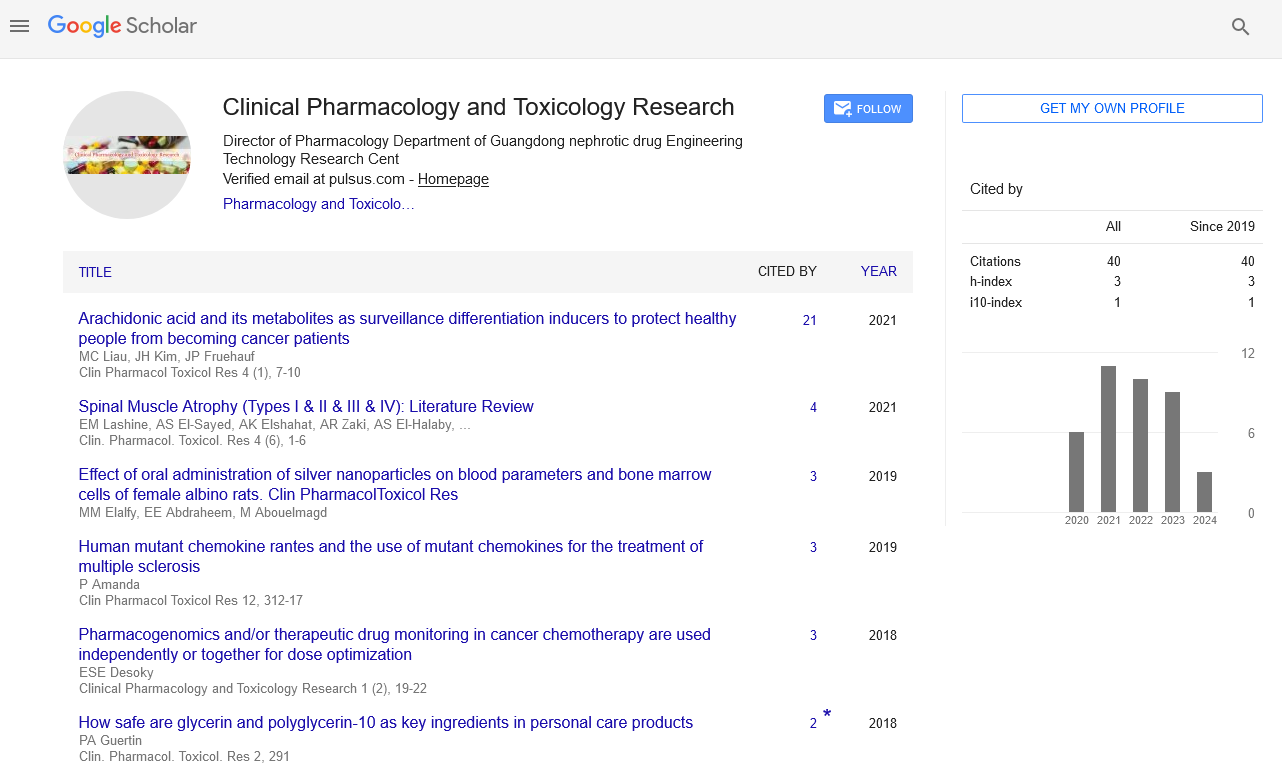Phases of drug development
Received: 28-Oct-2020 Accepted Date: Nov 11, 2020; Published: 17-Nov-2020
Citation: Day L. Phases of drug development. Clin Pharmacol Toxicol Res. 2020;3(3):4.
This open-access article is distributed under the terms of the Creative Commons Attribution Non-Commercial License (CC BY-NC) (http://creativecommons.org/licenses/by-nc/4.0/), which permits reuse, distribution and reproduction of the article, provided that the original work is properly cited and the reuse is restricted to noncommercial purposes. For commercial reuse, contact reprints@pulsus.com
Introduction
A drug is can be any substance which can change an organism’s physiology when taken. It can cause beneficiary effects along with side effects. They can be consumed by inhaling, injecting and absorbing processes. The chemical substance present in the drug consists of a particular mechanism of action, chemical structure and mode of action to treat a disease or disorder.
Drug Development process involves bringing a novel drug into the market after finishing the process of drug discovery. To complete the process of drug discovery a drug must be processed through preclinical research on animals, filling regulatory status and further followed by clinical trials on animals and human beings. After this the drug needs a regulatory approval to market the drug.
Process of Drug Development
To develop a particular drug, researchers need to conduct tests on various molecular compounds. They identify the applications and clinical use of several molecular compounds and further test them to know the medicinal efficiency of the raw material. The acceptance is given only to the beneficiary compounds compared to the less efficient compounds [1]. The development of a drug starts with the process of absorption, distribution, metabolism and excretion. So, how the drug works in all the stages is tested. The different stages of drug development include: Drug discovery, Characterization of the product, Drug formulation, Drug delivery, Packaging, Pharmacokinetics, Drug disposition, Preclinical toxicology testing, Bioanalytical testing, Clinical trials, Regulatory review and Post marketing surveillance [2].
Drug discovery starts by choosing a chemical compound followed by targeting a disease or disorder. The mechanism of action of the drug is further studied by conducting several lab tests. Then finally it is tested for drug interactions if any. After qualifying every test the drug is finalized for the next process. Then the product id sent for characterization [3]. The size, color, shape, toxicity and bioavailability of the drug are characterized. After validating everything the drug is checked for formulation. The drug which has the ideal formulation and which has proper drug delivery parameter is selected. At this stage only the stability of drug such as effect of heat, light, time and toxicity is tested. The packaging is also done as per the reactions of the drug to avoid the drug interactions with the packaging material. The pharmacokinetic process is undergone before the drug disposition. The potency and safety of the drug is done by preclinical toxicology testing. It consists of genetic toxicity and reproductive toxicity [4].
The final process of testing the drug is clinical trials, which has three phases. Phase I study used to assess the pharmacokinetic properties, Phase II evaluates the side effects of the drug and the Phase III involves diseased patients on which the drug is tested for effective results. The time period for all the phases of clinical trials were conducted is three months. After positive response of the drug, it has to be registered for the approval to release in the market. A license is approved for the drug which can be marketed further [5].
REFERENCES
- Fox P, Balleine RL, Lee C, et al. Dose escalation of tamoxifen in Patients with low endoxifen level: evidence for therapeutic drug monitoring-the TADE study. Clin Cancer Res. 2016; 22(13):3164-71.
- Gong IY, Teft WA, Ly J, et al. Determination of clinically therapeutic endoxifen concentrations based on efficacy from human MCF7 breast cancer xenografts. Breast Cancer Res Treat. 2013; 139(1):61-9
- Madlensky L, Natarajan L, Tchu S, et al. Tamoxifen metabolite concentrations, CYP2D6 genotype, and breast cancer outcomes. Clinical Pharmacol Ther. 2011; 89(5):718-25.
- Martinez de Duenas E, Ochoa Aranda E, Blancas Lopez-Barajas I, et al. Adjusting the dose of tamoxifen in patients with early breast cancer and CYP2D6 poor metabolizer phenotype. Breast. 2014; 23(4):400-06.
- Hertz DL, Rae JM. Individualized tamoxifen dose escalation: Confirmation of feasibility, question of utility. Clin Cancer Res. 2016; 22(3):3121-23.





